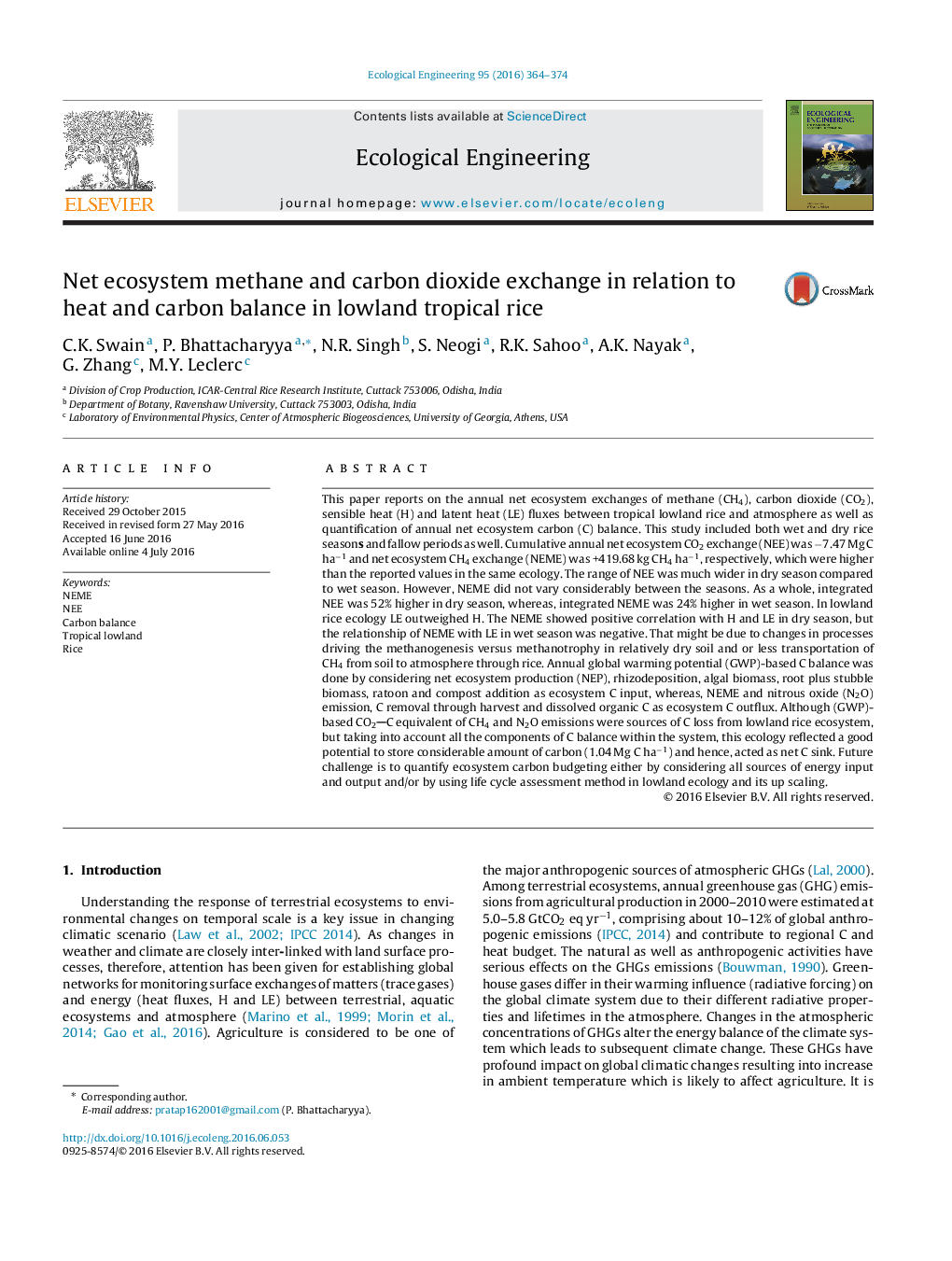| کد مقاله | کد نشریه | سال انتشار | مقاله انگلیسی | نسخه تمام متن |
|---|---|---|---|---|
| 4388461 | 1618004 | 2016 | 11 صفحه PDF | دانلود رایگان |
• Annual net NEE was −7.47 Mg C ha−1 in lowland tropical rice.
• Cumulative annual net NEME was +419.68 kg CH4 ha−1 in lowland tropical rice.
• In lowland rice ecology, latent heat outweighed sensible heat.
• Annual GWP-based C balance showed this ecology is a C sink.
• Tropical lowland rice ecology has a good potential to store carbon (1.04 Mg C ha−1).
This paper reports on the annual net ecosystem exchanges of methane (CH4), carbon dioxide (CO2), sensible heat (H) and latent heat (LE) fluxes between tropical lowland rice and atmosphere as well as quantification of annual net ecosystem carbon (C) balance. This study included both wet and dry rice seasons and fallow periods as well. Cumulative annual net ecosystem CO2 exchange (NEE) was −7.47 Mg C ha−1 and net ecosystem CH4 exchange (NEME) was +419.68 kg CH4 ha−1, respectively, which were higher than the reported values in the same ecology. The range of NEE was much wider in dry season compared to wet season. However, NEME did not vary considerably between the seasons. As a whole, integrated NEE was 52% higher in dry season, whereas, integrated NEME was 24% higher in wet season. In lowland rice ecology LE outweighed H. The NEME showed positive correlation with H and LE in dry season, but the relationship of NEME with LE in wet season was negative. That might be due to changes in processes driving the methanogenesis versus methanotrophy in relatively dry soil and or less transportation of CH4 from soil to atmosphere through rice. Annual global warming potential (GWP)-based C balance was done by considering net ecosystem production (NEP), rhizodeposition, algal biomass, root plus stubble biomass, ratoon and compost addition as ecosystem C input, whereas, NEME and nitrous oxide (N2O) emission, C removal through harvest and dissolved organic C as ecosystem C outflux. Although (GWP)-based CO2C equivalent of CH4 and N2O emissions were sources of C loss from lowland rice ecosystem, but taking into account all the components of C balance within the system, this ecology reflected a good potential to store considerable amount of carbon (1.04 Mg C ha−1) and hence, acted as net C sink. Future challenge is to quantify ecosystem carbon budgeting either by considering all sources of energy input and output and/or by using life cycle assessment method in lowland ecology and its up scaling.
Journal: Ecological Engineering - Volume 95, October 2016, Pages 364–374
